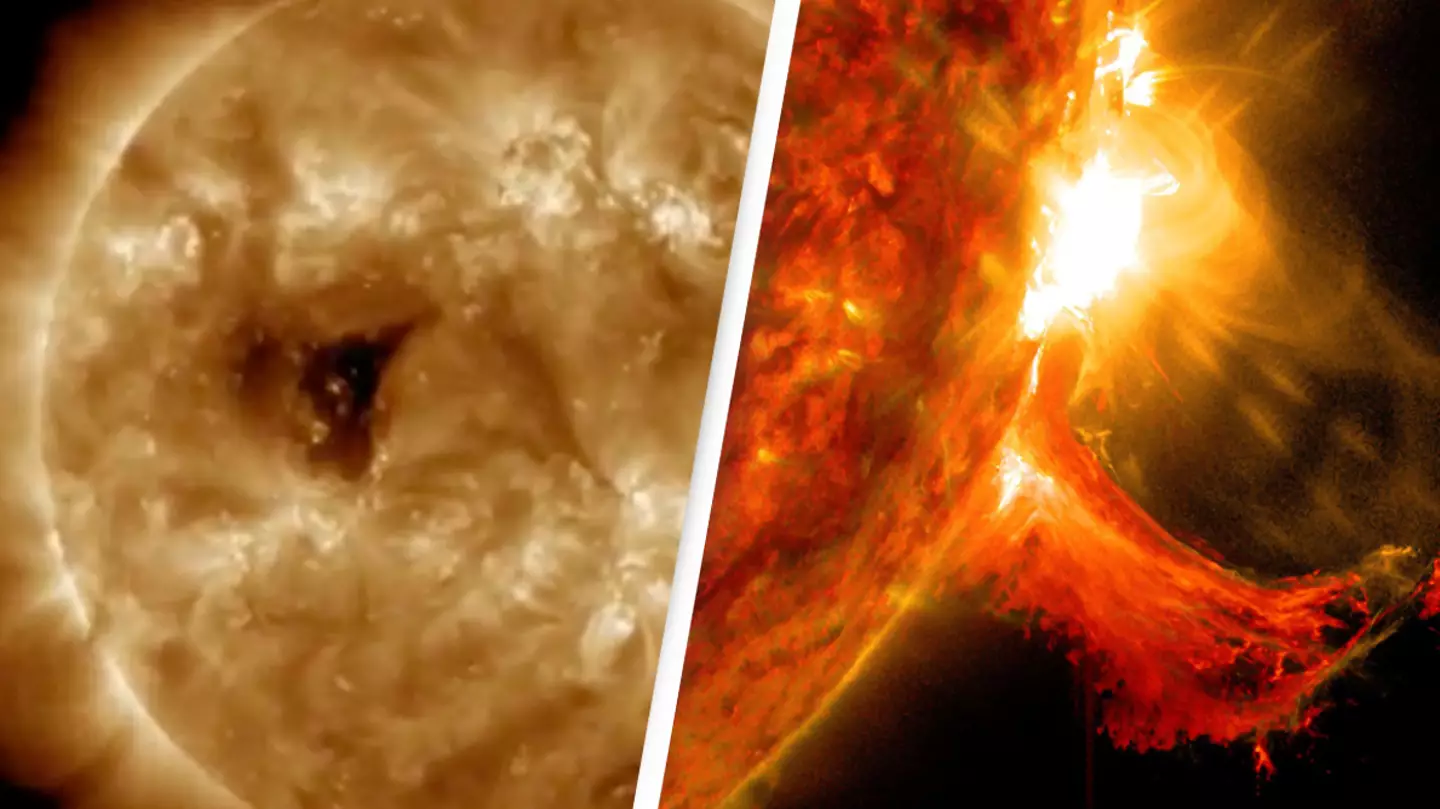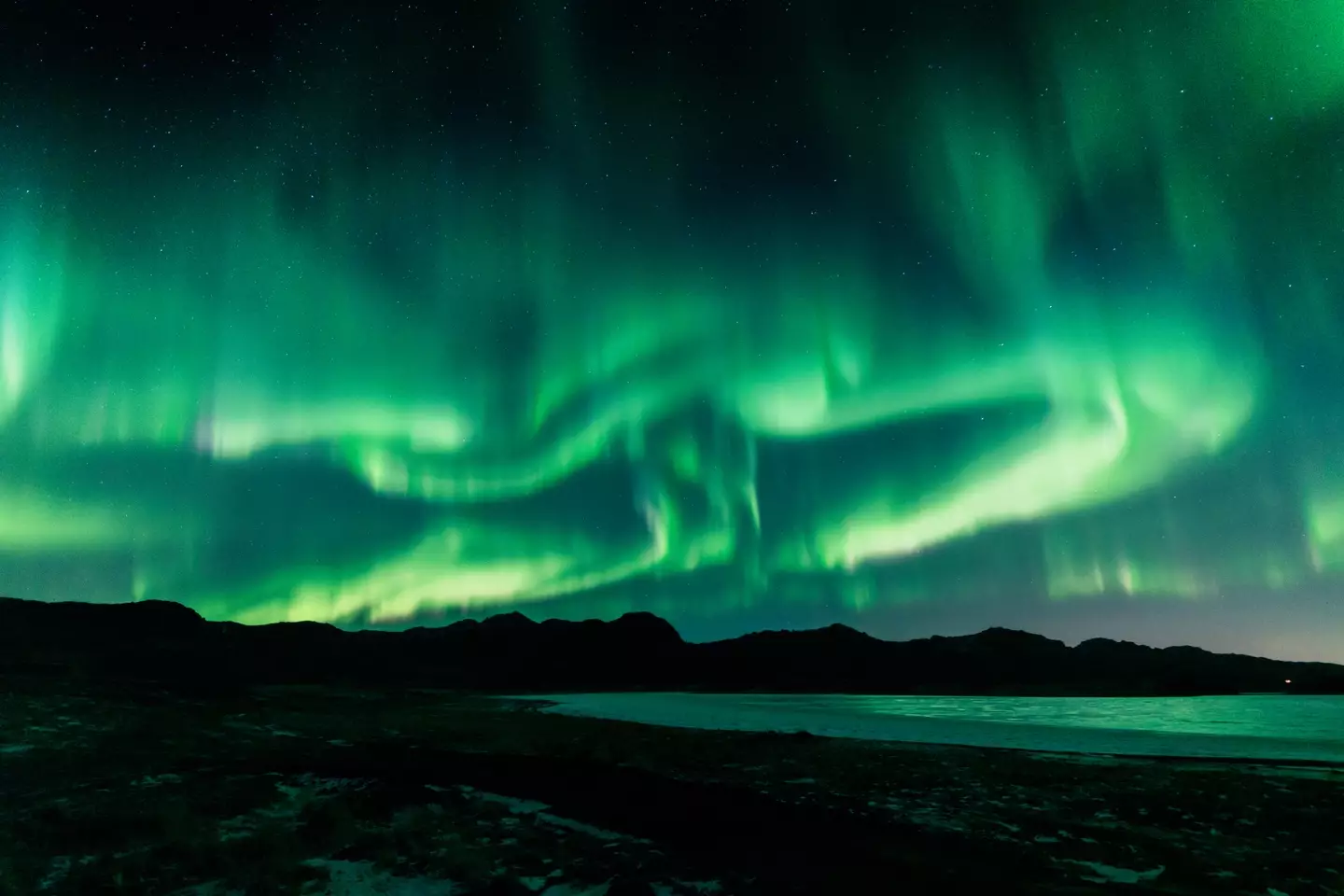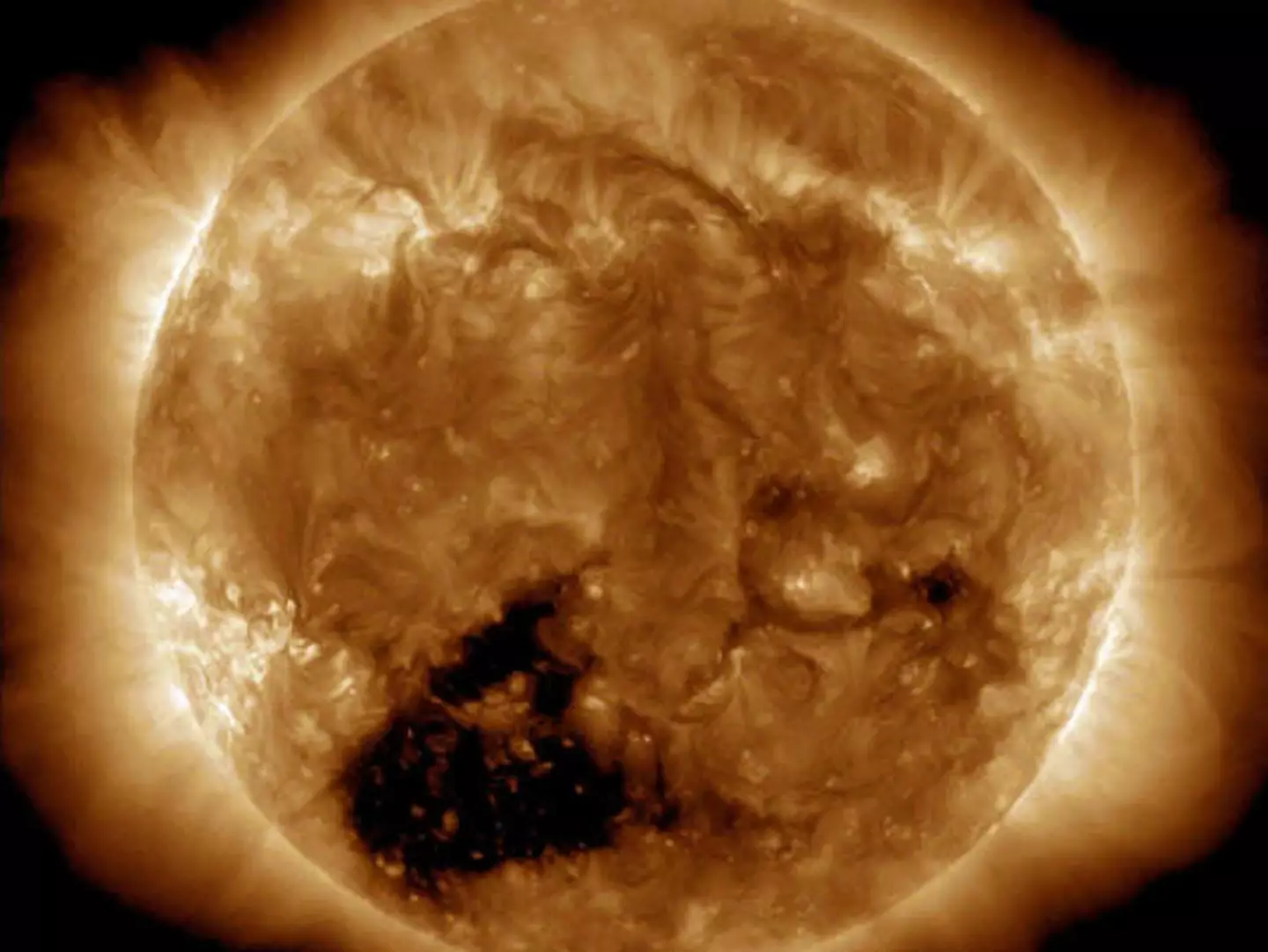
A giant coronal ‘hole’ has appeared on the Sun, which NASA says could send 1,800,000 mph solar winds towards Earth.
The hole measures approximately 20 Earths across, and is expected to trigger winds that will reach our planet this weekend.
The discovery follows news of another coronal hole on the Sun that measures 30 times the size of Earth, which started rotating away from us to allow the new large hole to come into view.
Daniel Verscharen, an Associate Professor of Space and Climate Physics at University College London, told Insider: "The shape of this coronal hole is not particularly special. However, its location makes it very interesting.
Advert
"I would expect some fast wind from that coronal hole to come to Earth around Friday night into Saturday morning of this week.”

According to NASA, a coronal hole is a patch of the Sun’s atmosphere with much lower density than elsewhere, and appears to us as dark patches.
“These are regions where the Sun’s magnetic field lines are connected directly to interplanetary space, allowing solar material to escape out in a high-speed stream of solar wind, leaving a dark ‘hole’ near the surface of the Sun,” NASA said.
Advert
“Coronal holes appear throughout the solar cycle, but can last for much longer periods of time during solar minimums, when the Sun is less active.”
They release solar winds into space, which can lead to incredible auroras if they reach Earth - with Verscharen saying these winds can reach speeds of more than 800km per second, or about 1,800,000 mph.
If those magnetic lines are facing towards Earth, the powerful solar wind will enter our atmosphere.
"If it is oriented in the southward direction, we're more likely to have a space-weather event, but we don't know that yet," Verscharen said.
Advert

Mathew Owens, Professor of Space Physics at the University of Reading, told Insider that coronal holes usually appear around the poles of the Sun, where their winds are spewed into space, but as it gears up to a peak in activity - something that only happens around every 11 years - the holes become more likely to appear near the equator.
"This one being at the equator means we're pretty much guaranteed to see some fast wind at Earth a couple of days after it rotates past central meridian," he explained.
The winds produced by coronal holes can also damage satellites, but thankfully scientists aren’t too worried about this one damaging any infrastructure, saying it may just trigger these stunning auroras.
Advert
"We are really behind with our prediction and forecasting capabilities for space weather," Verscharen added.
"That's why we're working very hard to understand space weather, with the help of theoretical physics, plasma simulations on supercomputers, and cutting-edge observations with the latest spacecraft, such as the joint ESA-NASA mission Solar Orbiter."